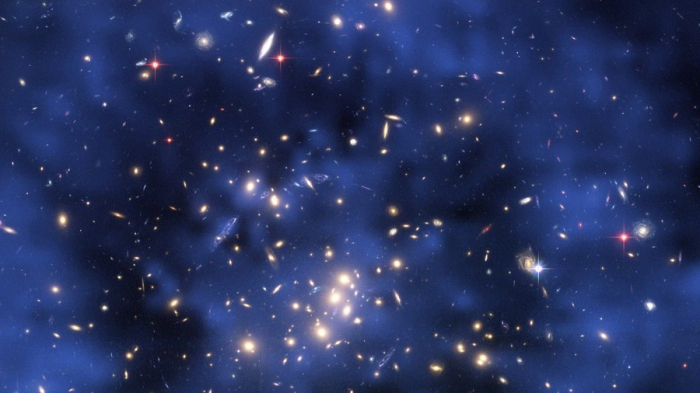Scientists studying the nature of gravity and the movement of stars and planets discovered that the space between galaxies contains something else that we can’t yet account for. Enter: Dark matter, an invisible and as-yet undetectable phenomenon believed to make up the bulk of matter across the universe.
While we have never directly detected dark matter, and we’re not entirely sure what it is, we know ‘something’ must be there. Think of it like wind in the sails of a ship: we can see its impact on the world right in front of us, but it might be difficult to point it out directly.
The European Space Agency’s (ESA) Gaia spacecraft is currently carrying out its billion-star survey and spotted a group of 30,000 stars in something called the ‘S1 stream’ – the remnants of a dwarf galaxy smashed to smithereens by the Milky Way in the distant past.
Our Solar System lies directly in S1’s path but, despite the fact that it contains 30,000 stars or so, we’re not due for a cosmic KO anytime soon. Thankfully, everything is spread out nicely. However, barrelling along in S1’s wake is a vast array of dark matter flotsam and jetsam.
In a study, published November 7 in Physical Review D, a group of researchers based in the University of Zaragoza in Spain, postulate that by studying this stream and the behavior of its potential components, we may finally be able to detect dark matter for the first time. Thankfully, humanity has a few million years of valuable research time before the stream fully passes us by.
“(There are) tons of these streams all over the galaxy, some of them are really huge and you can see them in the sky,” explains Ciaran O’Hare of the University of Zaragoza in Spain.
In fact, there are approximately 30 such streams in our galaxy, but S1 is the only one that will blow right past us – at least for the next million years.
While the technology may not yet exist to detect the vast stream of dark matter, the next generations of devices such as the Axion Dark Matter Experiment, could prove the existence of such cosmic debris in the future – provided they can generate powerful enough magnetic fields to make key component parts visible to us.
RT
More about: science
















































